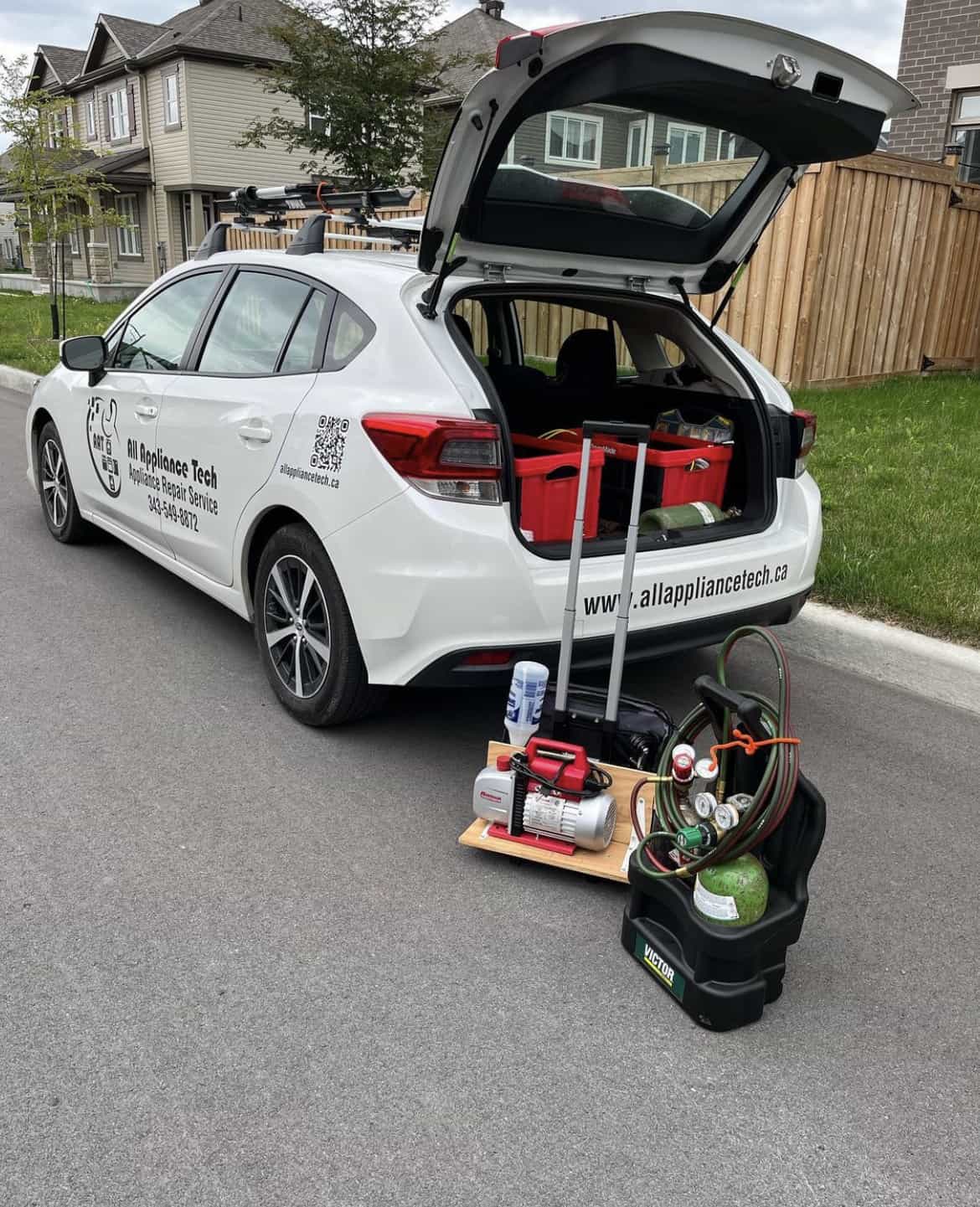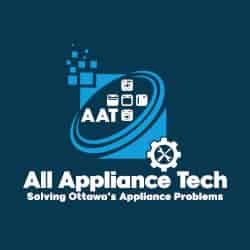A Comprehensive Guide to Oven & Stove Repair In Ottawa
Curious about the real cost of getting your oven or stove fixed by an appliance repair tech in Ottawa? This guide has got you covered. From the sudden inconvenience of a malfunctioning stove to the gradual decline of an oven's performance, we delve into what it really means—and costs—to maintain these essential kitchen appliances. Equipped with insights from skilled technicians, this guide provides a thorough look at the expenses involved in repairs, practical maintenance tips, and the factors that influence the lifespan of your oven and stove. Let's unravel the complexities of oven and stove maintenance and repair, empowering you with the knowledge to make smart, informed decisions for your home.
Cost Breakdown: Detailed Expenses for Oven & Stove Repair
In this section, we offer a detailed overview of the costs associated with repairing ovens and stoves in Ottawa. This breakdown will help you understand the financial aspect of repairing these essential kitchen appliances.
|
Component |
Low-end Cost |
Average Cost |
High-end Cost |
|
Heating Element |
$80 |
$130 |
$180 |
|
Gas Burner |
$100 |
$150 |
$200 |
|
Oven Thermostat |
$100 |
$175 |
$250 |
|
Ignition Switch |
$120 |
$170 |
$220 |
|
Control Panel |
$150 |
$250 |
$350 |
Understanding the Costs:
-
Component Costs:
- Heating Element: Essential for cooking, the cost to replace or repair can vary.
- Gas Burner: Repairing a gas burner might include fixing the igniter or the valve.
- Oven Thermostat: Critical for accurate temperature control in your oven.
- Ignition Switch: Important for gas ovens and stoves, ensuring safe and efficient lighting.
- Control Panel: A more complex repair, often related to the oven's electronics.
-
Labor Costs:
- In Ottawa: The cost for a technician's expertise is significant. On average, labor costs range from $50 to $120 per hour.
- Type of Billing: Be aware of whether the technician charges a flat rate or by the hour.
-
Additional Considerations:
- Emergency Repairs: Expect higher rates for urgent repairs, especially during non-business hours.
- Brand Specificity: Some brands may require more expensive parts.
- Complexity of Repair: More complex issues will result in higher costs due to longer repair times.
Remember, these costs can vary based on your specific situation. For an accurate estimate, consult with a professional technician, and for more information, visit AllApplianceTech Oven & Stove Repair. Always ask for a detailed quote upfront to avoid unexpected expenses.
Broader Environmental Impact of Oven & Stove Repair: A Sustainable Choice
When considering repairing versus replacing ovens and stoves, the environmental benefits are clear and significant, resonating well beyond individual actions:
-
Landfill Impact and Local Waste Management:
- Waste Diversion: Despite effective recycling and composting programs, large appliances contribute to landfill volumes. By choosing to repair ovens and stoves, you help in reducing this burden, supporting efforts to keep waste to a minimum.
- Resource Conservation: Extending the life of these appliances through repair aligns with environmental goals to minimize waste and reduce the demand for new raw materials, easing the strain on resource extraction and processing.
-
Conserving Metal and Plastic:
- Reduced Demand for Resources: Manufacturing new ovens and stoves requires substantial amounts of metal and plastic. Opting for repairs over replacements cuts down the demand for these materials, thereby conserving resources that are typically procured through energy-intensive processes.
- Emission Reductions: This conservation leads to lower energy requirements in the manufacturing process, translating into significant reductions in greenhouse gas emissions. Recycling and reusing metals, as highlighted by the EPA, can reduce related emissions by up to 75%.
-
Carbon Emission Savings in the Appliance Lifecycle:
- Avoiding Manufacturing Emissions: The CO2 emissions from producing a new appliance are substantial. Repairing existing ovens and stoves avoids these emissions, contributing to a lower carbon footprint.
- Supply Chain Impact: Beyond the direct carbon savings, repairing also reduces emissions throughout the supply chain, including transportation and disposal.
- Contribution to Environmental Goals:
- Sustainability at the Local and Global Levels: Individual decisions to repair appliances contribute to broader climate goals. These actions align with efforts to foster sustainable practices, reducing carbon footprints both locally and globally.
Repairing ovens and stoves is a proactive step towards environmental sustainability. It's a choice that significantly contributes to reducing waste, conserving resources, and minimizing carbon emissions, echoing the importance of sustainable living in preserving our planet for future generations.
Detailed Maintenance Tips: Ensuring Longevity of Your Oven & Stove
Proper maintenance is crucial for extending the life of your oven and stove. Regular upkeep not only prevents common issues but also ensures efficient operation. Here are detailed maintenance tips for your oven and stove:
- Cleaning Burners and Heating Elements:
-
-
- For gas stoves, regularly clean the burners to prevent clogging. Remove the burner elements and caps, and clean them with a mixture of mild detergent and water.
- For electric stoves, wipe down the heating elements with a damp cloth. Ensure they are completely dry before turning them back on.
-
- Oven Interior Cleaning:
-
-
- Clean the interior of your oven regularly to prevent the buildup of grease and food particles. Use a mixture of baking soda and water for a natural cleaning solution. For tougher residues, use an oven cleaner following the manufacturer's instructions.
- Avoid excessive water, as it can damage the oven's electrical components.
-
- Inspecting and Replacing Gaskets:
-
-
- Check the oven door gasket for any signs of wear, tear, or deformation. A faulty gasket can lead to heat loss and inefficiency.
- Replace the gasket if necessary to ensure proper sealing and maintain temperature control.
-
- Calibrating the Oven Thermostat:
-
-
- If you suspect your oven's temperature is off, use an oven thermometer to test its accuracy.
- Consult the manual or a professional to recalibrate the thermostat if there are significant discrepancies.
-
- Unclogging Oven Vents:
-
-
- Ensure the oven vents are not blocked. Blocked vents can cause overheating and affect cooking performance.
- Regularly inspect and clean the vents to maintain proper airflow.
-
- General Care and Usage:
-
- Avoid using aluminum foil to line the bottom of your oven, as it can interfere with heat distribution and damage the interior lining.
- Handle oven racks and stove components gently to prevent damage.
By following these maintenance tips, you can significantly enhance the efficiency and lifespan of your oven and stove. Regular maintenance reduces the likelihood of costly repairs and contributes to the appliance’s optimal performance. Remember, consulting the appliance’s manual for specific care instructions or seeking professional advice is always recommended for the best maintenance practices.
To Repair or Replace: Making the Informed Choice for Your Oven & Stove
Deciding whether to repair or replace your oven or stove is a critical decision that hinges on several factors. Here’s a guide to help you weigh your options:
- Assess the Age and Lifespan:
-
-
- The average lifespan of an oven or stove is typically around 10-15 years. If your appliance is within this range but experiencing issues, repairs might be more cost-effective. For older models nearing the end of their lifespan, replacement might be a better investment.
-
- Evaluate the Cost of Repairs:
-
-
- A good rule of thumb is if the repair cost is more than half the price of a new appliance, it may be more economical to replace it. However, consider the nature of the problem: is it a one-off issue or a symptom of a larger, ongoing problem?
-
- Consider Performance and Efficiency:
-
-
- Modern ovens and stoves are more energy-efficient and come with advanced features. If your current model is outdated and not energy-star rated, upgrading could lead to energy savings and better performance in the long run.
-
- Frequency of Repairs:
-
-
- If your appliance has needed multiple repairs in recent years, it might be indicative of declining reliability. In such cases, investing in a new model might be more practical than facing recurring repair costs.
-
- Environmental Considerations:
-
-
- While repairing can often be the more eco-friendly option, it's important to balance this with the efficiency of the appliance. An older, inefficient model might consume more energy, offsetting the environmental benefits of repair.
-
- Personal Circumstances and Preferences:
-
- Finally, consider your personal circumstances, including budget, cooking needs, and preferences for features and technology. Sometimes, the choice to repair or replace can also be influenced by your desire for newer technologies or specific functionalities.
Making the decision to repair or replace your oven or stove should involve a careful consideration of these factors. It’s not just a question of immediate cost or convenience; it’s about evaluating the long-term implications for your finances, your cooking experience, and the environment. Consulting with a professional technician can provide valuable insights tailored to your specific situation and help guide you to the best course of action.
Concluding Thoughts On Oven & Stove Repair Costs
As we close this guide on the nuances of oven and stove repairs, remember that your decision reaches beyond immediate fixes—it's a reflection of your lifestyle and commitment to our community.
- Informed Choices: Armed with insights on repair costs and maintenance know-how, you're now well-equipped to navigate these decisions. This knowledge isn't just about repairs; it's about understanding the role your choices play in the larger context of our city's commitment to sustainable living.
- Looking Ahead: Whether it's keeping your trusty oven humming or welcoming a new, efficient model into your kitchen, consider the long-term implications. Your decision shapes not only your culinary experiences but also the environmental footprint of your household.
- Local Expertise at Your Service: Feeling uncertain? Ottawa's skilled technicians are a conversation away, ready to offer advice tailored to your specific needs. Their expertise can be invaluable in guiding you to a choice that suits both your kitchen and your values.
- A Personal and Community Impact: Every decision, be it repair or replacement, weaves into the fabric of our community. It’s about finding the right balance between practicality, sustainability, and being a conscious member of our vibrant city.
- Beyond the Kitchen: Your choice is a small but significant part of Ottawa's environmental story. It’s more than just about keeping your kitchen running; it's a testament to making mindful decisions that resonate with our community spirit.
So, as you ponder the future of your oven and stove, remember the broader narrative. Your decision is not just about delicious meals; it's about contributing to the sustainable heartbeat of our city. Here's to choices that enhance not only our kitchens but also our collective home!


